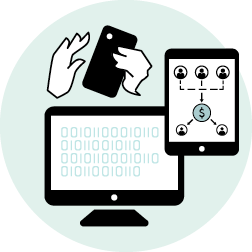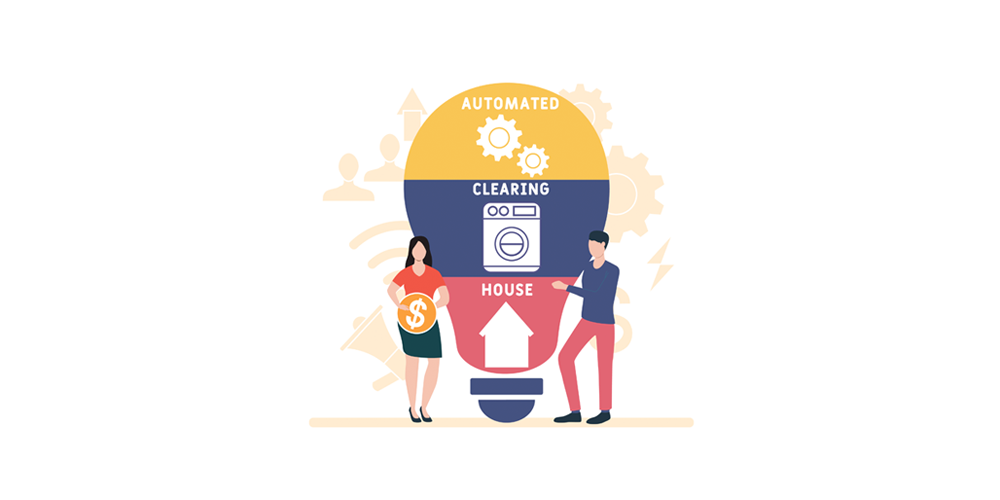Paying by check is just so last year.
The number of payments that businesses made on the U.S. ACH network increased significantly in the fourth quarter of 2020, accelerating a shift that began several years ago. ACH has become increasingly popular to both businesses and their customers for many reasons – some due to the nature of the transactions themselves and others due to the nature of the world we live in today.
The bottom line is, while there are several safe and secure ways to pay online, ACH offers advantages that make it a valuable and timely addition to the payment options that businesses offer their customers.
ACH Defined
The Automated Clearing House (ACH) is a network that electronically moves money between bank accounts across the United States. In addition to payments, the ACH network also is responsible for direct deposit transactions, such as paychecks from employers to employees’ bank accounts. The ACH network is separate from card networks such as Visa and Mastercard.
The National Automated Clearinghouse Association (Nacha) develops and administers the ACH network. Companies and consumers made more than 7 billion payments on the ACH network in the fourth quarter of 2020, an 8.9% increase over the same period in 2019, Nacha says. And while consumer, person-to-person, and direct deposit payments all went up significantly, so did B2B use of ACH for vendor and supply chain payments. Those payments rose almost 15%, to 1.2 billion.
Accelerated use of ACH among businesses continued a shift that started in 2019, when for the first time fewer than half of B2B payments were made by check, a study by the Association for Financial Professionals (AFP) found.
Recent Events Drive Increased Use
A negative financial trend and a worldwide event (guess which one?) have contributed to increased use of ACH in the past few years.
Continued check fraud. As Nacha says, fraudsters love checks more than any other payment type, because while digital security measures have continued to evolve, paper checks have not. They include plenty of information and are in wide circulation, so they’re an easy target for forgery and theft.
However, ACH is less subject to fraud than a check system, according to recent figures from J.P Morgan. 75% of organizations that were victims of fraud attempts/attacks experienced check fraud, while only 22% experienced fraud via ACH.
COVID-19 and closed offices. Remote work has made issuing checks much more difficult. According to Nacha’s 2020 Industry Survey, businesses have had to develop creative ways to issue checks, such as drive-by check approvals. One business had to shut down an office because a technician servicing a check printer later discovered he had COVID-19. There are also in-person demands on the receiving side of check payments, including the steps necessary to deposit physical checks in the bank.
Fast, Convenient, and Less Costly
In addition to being safer, both fraud- and health-wise, ACH offers other significant advantages to businesses and their customers.
Speed and convenience. ACH transfers are faster and easier to handle compared to paying by check. ACH payments take place in seconds. They eliminate mailing time and trips to the bank to make deposits. They also can’t be lost on their way from payor to payee. In addition, ACH can be offered via the same gateway as other electronic payment methods, making the choice convenient.
Low cost. According to 2020 figures, processing fees for major credit cards can range from just above 1% to 3.5% per transaction, not counting setup and operational fees. Checks cost $1.22 to process, according to Nacha.
In contrast, ACH transfers generally cost less. Flat fees can range from 20 cents to $1.50 and percentage fees from .5% to 1.5%, according to Merchant Maverick, a comparison site that reviews small business software and services. And that doesn’t take into account the time and labor needed to process checks. All those savings add up, improving a business’s bottom line.
Automated payments. ACH allows customers to automatically pay from their bank accounts when recurring payments are due. This removes the burden of bill payment from customers and means that businesses are more likely to get their funds on time.
A great alternative to credit cards. Many businesses are accustomed to paying vendors by check from a bank account and haven’t considered payment by credit card. The shift to ACH offers a more familiar path to electronic payments, allowing them to continue funding those payments from the same bank account. ACH is a great alternative for customers who don’t want to pay with credit cards.
Improved sales conversions. ACH payments are easier than writing a check, increasing the chances that a customer will purchase from a business.
Not Checkless – But Getting There
With 3.7 billion commercial checks collected in 2020, according to the Federal Reserve, we are far from a checkless society. But when you consider that the volume of those checks has dropped by half in the past decade, it’s clear where we’re headed.
Businesses that offer multiple electronic payment methods, including ACH, in a single gateway help all parties involved take advantage of another fast, easy, and secure way to pay – one that’s in keeping with the times.
Want to find out how MerchantE can help you with your payment processing needs? Explore our platform to learn more about our robust set of financial capabilities.




